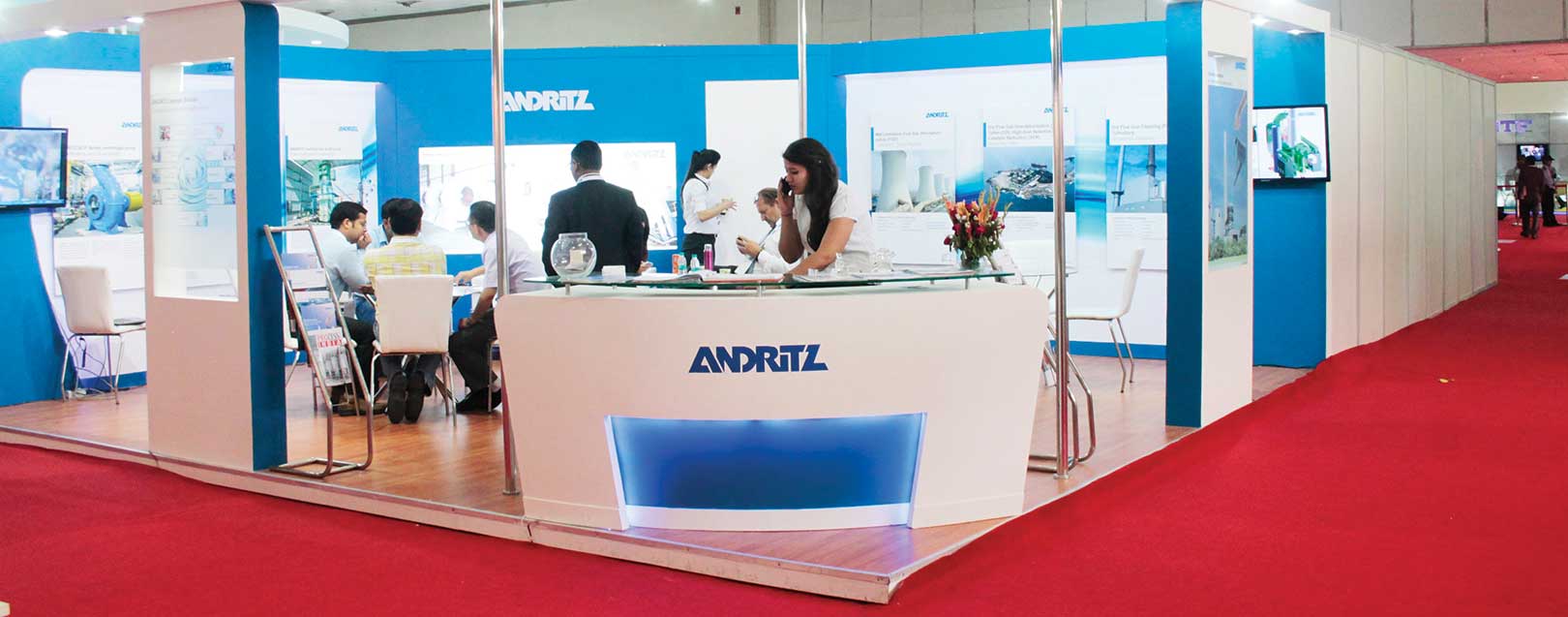
Glimpses of Power Gen India and Central Asia trade fair and conference, held at Pragati Maidan in New Delhi between May 5 and May 7, 2014
It’s not for no reason that electricity features amongst the top three demands of the Indian electorate – electricity, roads and water. And with India’s peak power deficit at just 3-4%, it’s disappointing that a majority in India don’t have access to quality power. The Dollar BusinessTM was in attendance at the 13th PGICA convention, where all stakeholders of the power sector presented innovative ideas and technologies that can help solve India’s power puzzle.
Neha Dewan | @TheDollarBiz
The 13th annual Power-Gen India and Central Asia (PGICA), co-located with Renewable Energy World India, DistribuTech India and incorporating HydroVision India, saw a packed house in attendance.Nearly 7,000 delegates and attendees from over 60 countries made it to the event. Over 100 speakers from different countries presented strategic and technical sessions, highlighting key challenges, opportunities and the regulatory framework in play in the power sector.
And it all augured well with 40% exhibitors rebooking for the next edition of PGICA. “This year we saw 20% more bookings as against last year, with further interest generated for next year as well! The maximum queries and interest was generated regarding dealership and equipment procurement in the power sector,” Avnish Seth, Project Head, PGICA told The Dollar Business.
Spread over a three days in the capital and covering a multitude of issues, the sessions on the first day centred on ‘Electricity’s role in promoting India’s continued economic growth.’ Policy and regulatory concerns moderated by P. D. Sudhakar, Chairman, Delhi Electricity Regulatory Commission (DERC) India, were among the strategic sessions held on the same day. The Electricity Act of 2003 also came up for discussion which, it was felt, had not fulfilled its promises.
V. L. Sonavane, Member – Technical, Maharashtra Electricity Regulatory Commission, shed light on some of the key concerns as well as the solutions at hand for regulators. Delving on the need for better regulation to facilitate development of ‘Smart Grid’ in India, he said, “Smart meter, smart analytics and smart people are the three main pillars of success.Regulatory effectiveness can be exercised by minimising influence of state government and regional regulators offering possible solutions.” Seconding Sonavane’s thoughts, Ella Coulson, Marketing Coordinator at PennWell, one of the co-organisers, said that Smart Grid – a technology used on electricity networks right from power plants and wind farms to electricity in homes and businesses – can help in reducing the rural-urban divide to a great extent. “This event is primarily an initiative to tap India’s potential future growth in the power sector. Another main objective is to find ways through which the rural-urban gap can be reduced,” she added.
This year a new module – DistribuTech India – offered further insight by addressing issues related to transmission and distribution of power in India and other markets. Besides automation technologies & market policies, an engaging session was tabled on the significance of cyber security in modern digital sub-stations and the cyber security implications of IT/OT convergence in smart utilities. Speakers from companies such as IBM, Infosys, Tata Power Trading, Lanco Power and many others, presented key facts and solutions that could help facilitate distribution of power in a better manner.
Over 250 exhibitors, including local and international companies, participated in PGICA this year, showcasing relevant products and technology. Distribution and conservation systems, boilers and steam systems, material handling systems, plant electrical systems and pumps were among a host of products and services that were exhibited at this year’s event.
The forum was also seen as the perfect opportunity to network with prospective local partners for setting up business in the country. While speaking to The Dollar Business, Jan Soukup, Commercial Director for Reko Cooling Towers, an international construction and design company dealing in construction, repair and service of cooling towers, said “We are keen to have some presence in the Indian market via a local partner. We have already contacted some people. There is a big potential for construction of power units in India. We want to be a part of this growth”. The three-day conference also featured a plethora of sessions pertaining to renewable energy, in which speakers discussed the significance of achieving India’s solar energy potential, rural electrification across the country and India’s bio-energy sector.
A final wrap on ‘Integration of Renewables on the Grid – Opportunities and Challenges’ concluded the event on the last day for the Renewable Energy and DistribuTech India sessions, with an emphasis on power quality improvement as well as convergence of renewable energy from conventional energies in industries. At the same time, PGICA presented various discussions on power plant safety techniques that addressed design technology as well as application of Vibration Isolation Systems (VIS) for power plant machines. Around the same time next year, the ‘power’ buzz will descend on India’s financial capital and is expected to be a bigger hit. According to Seth of PGICA, “The interest from the industry seems to be only growing with each passing year.”
Get the latest resources, news and more...
By clicking "sign up" you agree to receive emails from The Dollar Business and accept our web terms of use and privacy and cookie policy.
Copyright @2026 The Dollar Business. All rights reserved.
Your Cookie Controls: This site uses cookies to improve user experience, and may offer tailored advertising and enable social media sharing. Wherever needed by applicable law, we will obtain your consent before we place any cookies on your device that are not strictly necessary for the functioning of our website. By clicking "Accept All Cookies", you agree to our use of cookies and acknowledge that you have read this website's updated Terms & Conditions, Disclaimer, Privacy and other policies, and agree to all of them.

